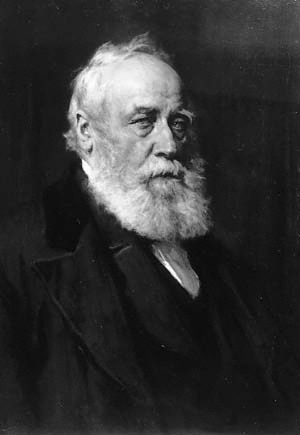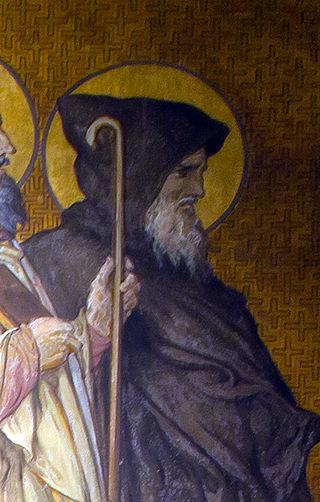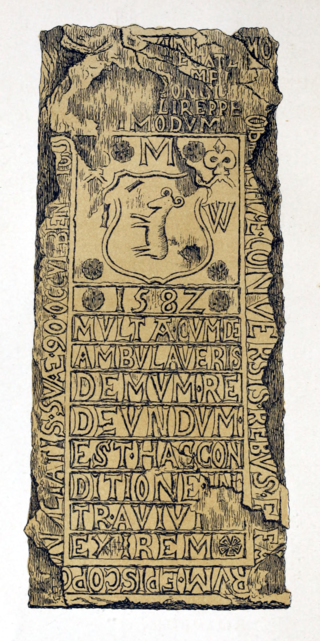Related Research Articles

William Forbes Skene WS FRSE FSA(Scot) DCL LLD, was a Scottish lawyer, historian and antiquary.

Pittenweem Priory was an Augustinian priory located in the village of Pittenweem, Fife, Scotland.
Beóán of Mortlach is the first of the three known Bishops of Mortlach. His name, which could also be written in non-Gaelic contexts as Beanus, Beoanus and Beyn, means "lively one". Walter Bower, following John of Fordun, tells us that the bishopric was founded by king Máel Coluim II of Scotland in the seventh year of his reign as thanks to God for victories over the Scandinavians, and tells us that "the first bishop was Beyn, a saintly man, worthy of the episcopal office, elevated to this see by the Lord Pope Benedict VIII at the king's request". The Aberdeen Registrum records a charter granted to Bishop Beóán by King Máel Coluim at Forfar, granting the bishop the churches and lands of Clova and the unidentified Dulmech. The Aberdeen Breviary commemorated "Bishop Beóán" as a saint on 26 October. Another Beóán, perhaps the one mentioned in the Life of St. Cathróe of Metz, was commemorated on 16 December, and the two were often confused.

Aaron of Aleth, also called Saint Aihran or Eran in Breton, was a hermit, monk and abbot at a monastery on Cézembre, a small island near Aleth, opposite Saint-Malo in Brittany, France. Some sources suggest he may have migrated from Celtic Britain to take up residence in Armorican Domnonia.
St Andrews Cathedral Priory was a priory of Augustinian canons in St Andrews, Fife, Scotland. It was one of the great religious houses in Scotland, and instrumental in the founding of the University of St Andrews.

Sir John Skene, Lord Curriehill (1549–1617) was a Scottish prosecutor, ambassador, and judge. He was involved in the negotiations for the marriage of James VI and Anne of Denmark.

John Winram was a 16th-century Scottish priest and ecclesiastical reformer. He was born in 1492, the son of one James Winram of Ratho and his wife Margaret Wilkie. He obtained a Bachelor's Degree (1515), a Master's Degree and a Doctorate (1541) from St Leonard's College, University of St Andrews.

Portmoak is a parish in Kinross-shire, Scotland. It consists of a group of settlements running north to south: Glenlomond, Wester Balgedie, Easter Balgedie, Kinnesswood, Kilmagadwood and Scotlandwell.
Saint Cathan, also known as Catan, Cattan, etc., was a 6th-century Irish monk revered as a saint in parts of the Scottish Hebrides.
Robert Balfour, 2nd Lord Balfour of Burleigh was a Scottish military commander.
John Sage (1652–1711) was a Scottish nonjuring bishop and controversialist in the Jacobite interest.
Saint Adrian of May was a martyr-saint of ancient Scotland, whose cult became popular in the 14th century. He is commemorated on 3 December. He may have been a bishop of Saint Andrews.

Walter Chepman was a Scottish merchant, notary and civil servant active in the late fifteenth and early sixteenth centuries. Chepman served at the Scottish court during the reigns of James IV and James V. In partnership with Androw Myllar he established Scotland's first printing press in 1508. Chepman was also a significant patron of Saint Giles' Kirk in Edinburgh.

Aeneas James George Mackay was a Scottish lawyer and academic, known as a legal and historical writer.

Saint Kennocha was a Scottish nun who is venerated as a saint in the area of Glasgow, Scotland. She is remembered on 13 and 25 March. She is included in the 1921 Book of Saints by the Monks of Ramsgate.
Saint Dotto was said to have founded a monastery on one of the Orkney Islands, which bore his name. However, there is no island by that name, and no evidence that he existed. His feast day is 9 April.
Saint Maccai was an Irish missionary who founded a monastery on the Isle of Bute, Scotland. His feast day is 11 April.
Saint Vimin was a Scottish abbot and bishop. He is said to have founded Holywood Abbey in Fife, Scotland. However, there are no reliable sources for his life. His feast day is 21 January.

Saint Glastian of Kinglassie was a bishop based in Fife who acted as a mediator in the wars between the Picts and the invading Scots. His feast day is 28 January.

Saint Munde was a Scottish abbot in Argyll, Scotland. There is some confusion between this saint and the much earlier Saint Fintan Munnu. His feast day is 15 April.
References
- 1 2 "St. Monan's Cell". POWiS
- ↑ . Dictionary of National Biography . London: Smith, Elder & Co. 1885–1900.
- ↑ Butler, Alban. "St. Monan, Martyr, in Scotland", The Lives of the Saints. Vol.III, 1866
- ↑ Fleming, David Hay. Guide to the East Neuk of Fife, J. Innes, 1886, p. 6
 This article incorporates text from this source, which is in the public domain .
This article incorporates text from this source, which is in the public domain . - ↑ "The Chapel of Portmoak", The Kinross-Shire Civic Trust
- ↑ Scott, Hew D. (1950). Fasti Ecclesiae Scoticanae. The succession of ministers in the parish churches of Scotland. Vol. 8. Perth and Kinross Council Archive.: Oliver and Boyd. Retrieved 19 June 2018.
- . Dictionary of National Biography . London: Smith, Elder & Co. 1885–1900.